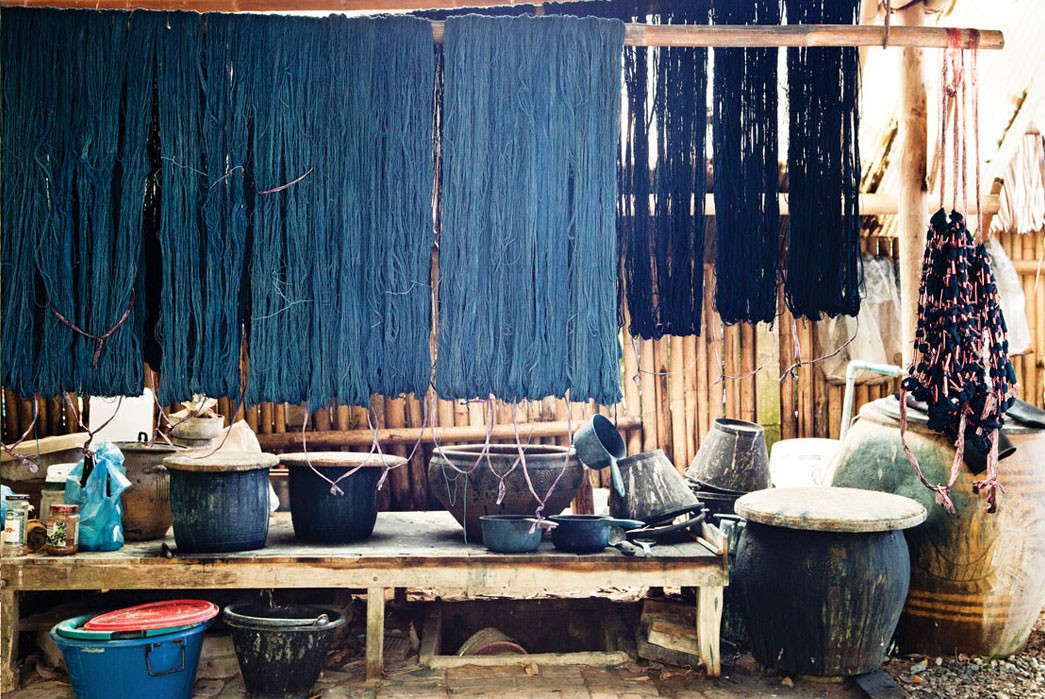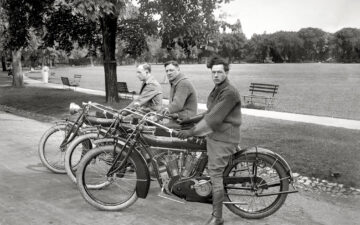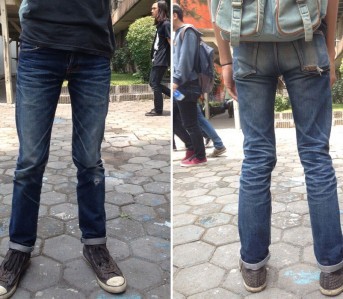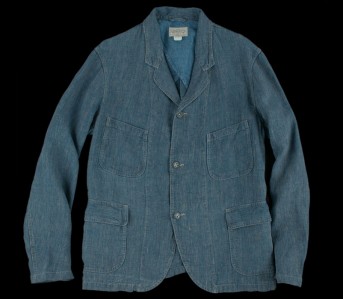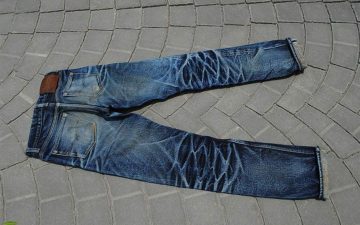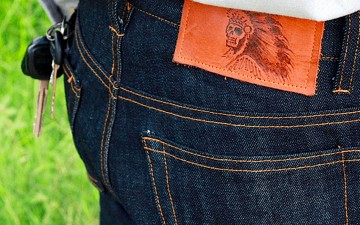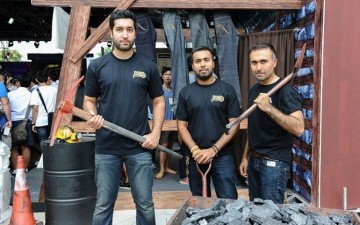White Oak Economy is a monthly column by denim journalist veteran, Amy Leverton where she examines the interplay between the worlds of high end artisanal denim and the mall brands behind them.
Bangkok is currently one of my favorite cities in the world and Thailand one of my favorite countries. But it’s balmy as f**k. And I’m talking the kind of balmy where if you accidentally packed a t-shirt that is more than 180GSM you will never take it out of your case. Suddenly, only your lightest weight jerseys are wearable (and you can forget those vintage poly mixes) and even then you have this desperate heat-induced anxiety all the time, this need for seven cold showers a day, this constant film of moisture all over you, and I’m not even someone who sweats a lot. Are you getting it? It’s HOT.
Hardly the place for a heavyweight raw denim scene to be in full swing, right? But the Thai’s would put half of you lot to shame with their commitment to raw denim; they love it! And this is not just Thailand–this is the case all over SE Asia! It’s a significant movement and it’s fascinating, so I decided to write about it. I hope you’re interested.
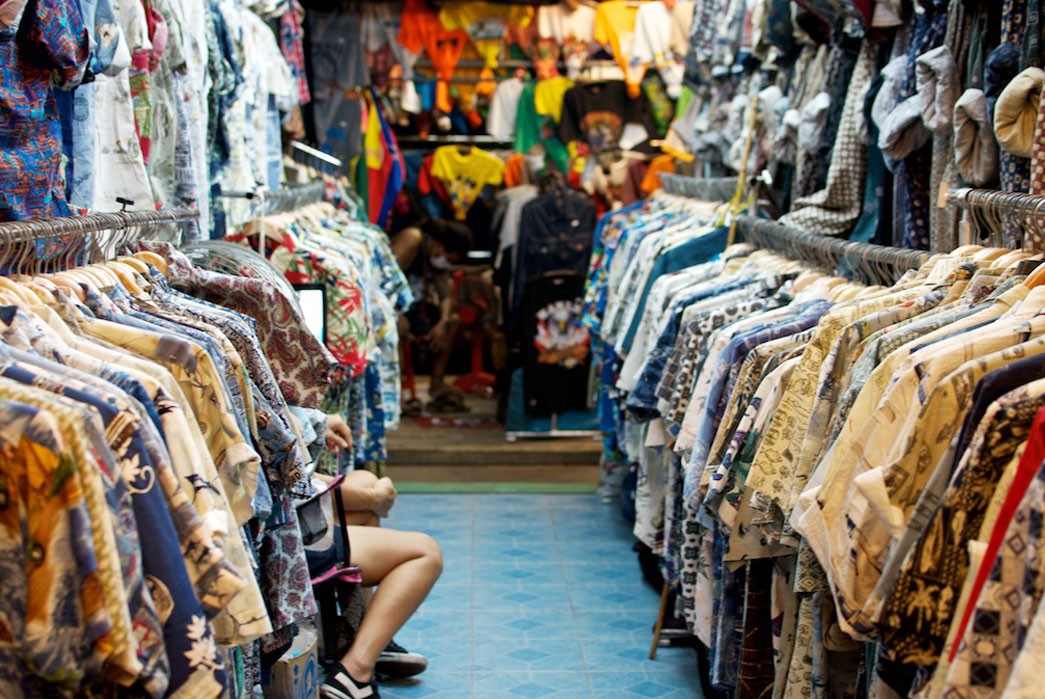
Vintage shirts at Chat-u-Chak.
I first visited Thailand in 2004, went to Chat-u-Chak (one of the most famous and largest markets in the world), got super overwhelmed and only bought one pair of vintage cowboy boots. I couldn’t find my way back to the hotel as it got really dark really fast, (before the iPhone of course) and I generally messed everything up, so it wasn’t a particularly deep dive into the scene there! But I do remember being struck by how tangible the vintage world was, even then.
I started hearing about Bangkok again a few years ago in 2012 when Pronto started up their ‘denim carnival.’ Sam wrote all about it here on the WGSN blog, you can also check out our coverage for the 2013’s edition. Then a year later I remember reading about Ben Viapiana, and at that point, I realized something fascinating was going on. I just had to find out more.
So I retraced my footsteps in May to try and get a sense of the city.
For me, sadly, Bangkok is my only connection to SE Asia, and even then my knowledge is pretty limited. But luckily David (Shuck) has also been fascinated with this side of the world and supplied me with some interviews and info from some great experts, consumers, and denim-heads based out there who will be able to offer us a window into their scene:
Direz is the man behind Darahkubiru, which is THE raw denim site in Indonesia. He was originally a massive sneaker-head who spent time on Superfuture and Superdenim, but it was when he was living in Amsterdam in 2009 and visited the store Mode D’emploi in the Hague (since closed) that he became converted. He met Rene and Menno from Tenue De Nimes, was intro’d to the brand Momotaro, and became entrenched in the Dutch denim scene.
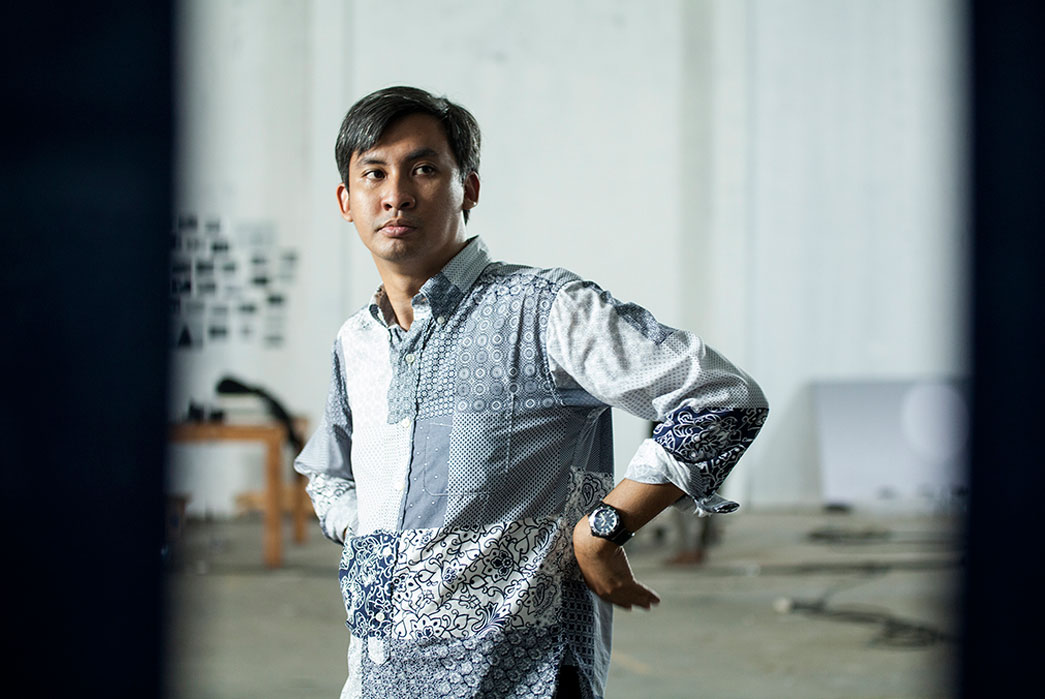
Direz of Darahkubiru
“At that moment, no one was really working on spreading the raw denim trend in Indonesia, and I decided to start a website containing information about raw denim for Indonesian people, and from the inception, my concept was to keep it local (using the Indonesian language only). After the website was complete came the forum and from this point on, the “denim scene” in Indonesia has been blooming.”
Then there’s Mayang, full name Putri Mayangsari. She is the woman behind the website Denim Squad from West Java. She is a textile engineer who majored in the Chemistry of Textiles and she now works in product development in an Indonesian denim mill. She’s been into denim since attending a lecture about the history of textiles, where she was opened up to the world of indigo. Just last year she started up the instagram feed and website, Denim Squad, to unite and teach those interested in denim. “Denim Squad focuses on discussions about denim ranging from technical aspects to denim promotion and denim lifestyle,” she says, adding, “We hope we can help everyone who starts up a new denim brand, help them to find good fabric, a good sewing vendor and promote their product.”
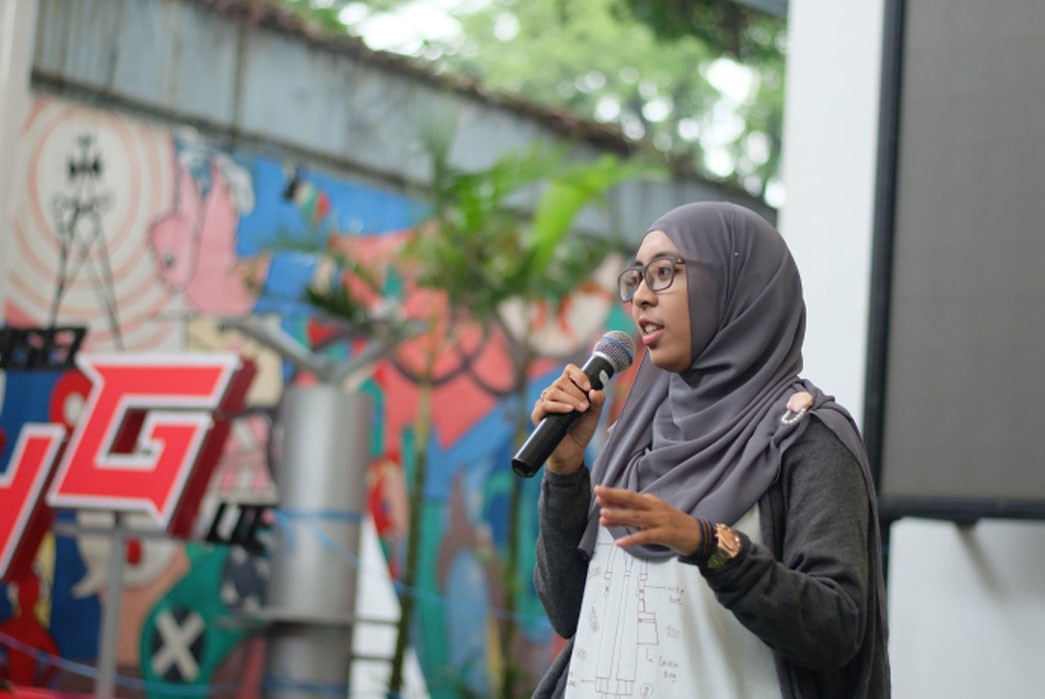
Mayang of Denim Squad.
I also chatted with my new buddy and Denim Dudette, Lauren Yates, AKA Ponytail journal. She’s Thai-Chinese-British-Australian, grew up in Thailand until the age of ten then returned to the country about 5 years ago. She is a sometimes model, fashion writer and consultant, and fully entrenched in the apparel world, as well as being a fantastic cook. She set up the blog Ponytail Journal three years ago, which mixes up content from the things she loves: cooking, apparel, sustainability, and lifestyle. She founded her own brand called W’Menswear last season and Bangkok buddy Ben Viapiana is making the production for her first collection.
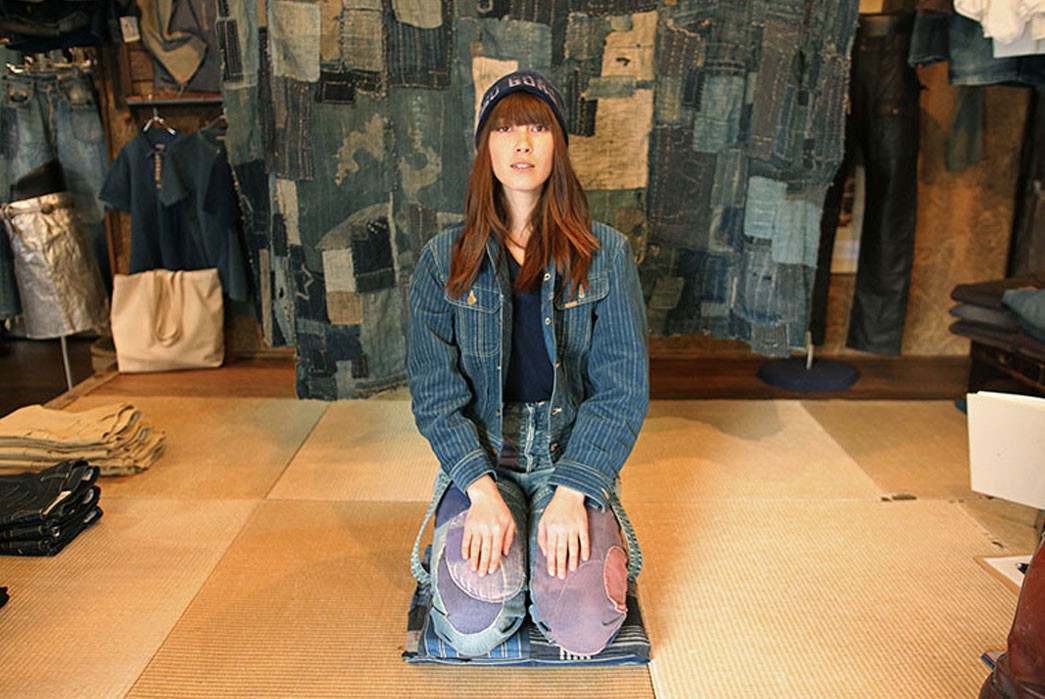
Lauren Yates of Ponytail Journal.
Ben Viapiana visited Bangkok ten years ago on a traveling stint with no initial intention of staying, but yet there he is ten years later and with a brand under his belt too. He had such a fantastic time in Thailand that he wanted to stay, and he challenged his buddies to find him a studio to start a brand; he didn’t think they would. They proved him wrong, so he held up his side of the bargain and set up his own business in 2006.
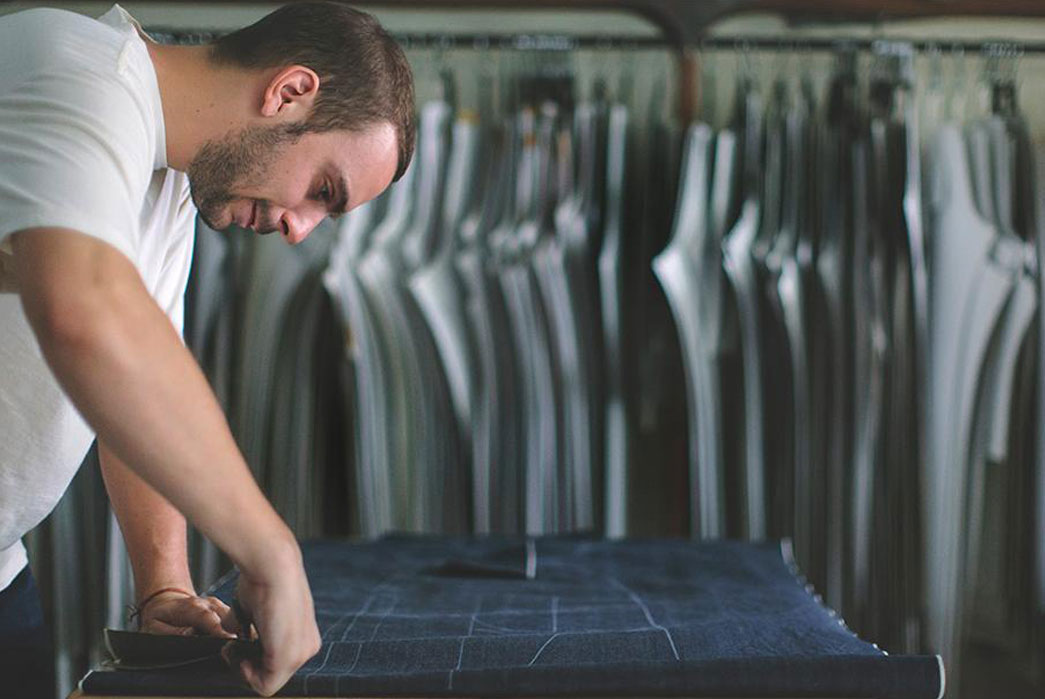
Ben Viapiana.
Mr. Hamzah founded Sage in 2012 and has become known as the go-to heavyweight raw denim brand in Indonesia. They were the first to use 22oz. denim and it’s that jean (The Marcher 22oz.) that has become their signature product. “With heavyweight denim, we tried to fill the market gap that not many local companies were providing, and to prove that an Indonesian company can also produce extra heavyweight jeans.”

Mr. Hamzah of Sage.
Sander Van De Vecht is a denim designer who works and consults for many brands as well as owning his own label, denim.lab. He’s a Dutch dude but started working out of Thailand about 10 years ago for G-sus, and a few years later at JCRAGS. So he comes from a product development and design angle, working with mills, laundries, and factories out in Thailand. He still lives in the Netherlands but visits Bangkok about once a month and has seen it change a huge amount in ten years. He wouldn’t choose to work anywhere else: “When I started my own company it felt natural to set it up from Thailand. It is also nice to work somewhere where not many other brands are; it keeps you more focused when you are not side by side in the laundries with the other brands.”
This is just a small selection of industry leaders who are carving out a career in denim over in SE Asia. When I visited Thailand recently, I met many more characters besides and I also learned a great deal about the greater community and the larger scene within this collection of tropical countries.
The great thing is that these days all these individuals (and of course many besides) are now connected. People such as Mayang and Direz have successfully united and educated their region and created an online community. Not only can denim-heads find out about the newest collabs, brands, and sales, but they can even get help starting up their own line from production to promotion. It’s surely the rise of such websites as well as the online communities of Instagram, Facebook and Twitter that has led to this otherwise isolated group of islands, countries, and individuals to unite. In fact, Direz told us that actually Indonesia ranks as the top five users of social media in the world!
But what I’m most interested in is what started this obsession going, before the good old internet joined the dots?
Sander recalls a time waaaay before Snapchat when he first visited Bangkok:
“There was a huge love for Americana even when I first visited. They had a very cool Rockabilly style; Hawaiian shirts and dry denims, and also a hippy style. I remember first going to the Train Market on the weekend and did not believe my eyes at first, all these small bars playing rock-n’-roll, and guys with little moustaches and slicked back hair, girls with pin-up tattoo’s, old Cadillacs on a parking lot selling beer out of the trunk… it was really awesome!”
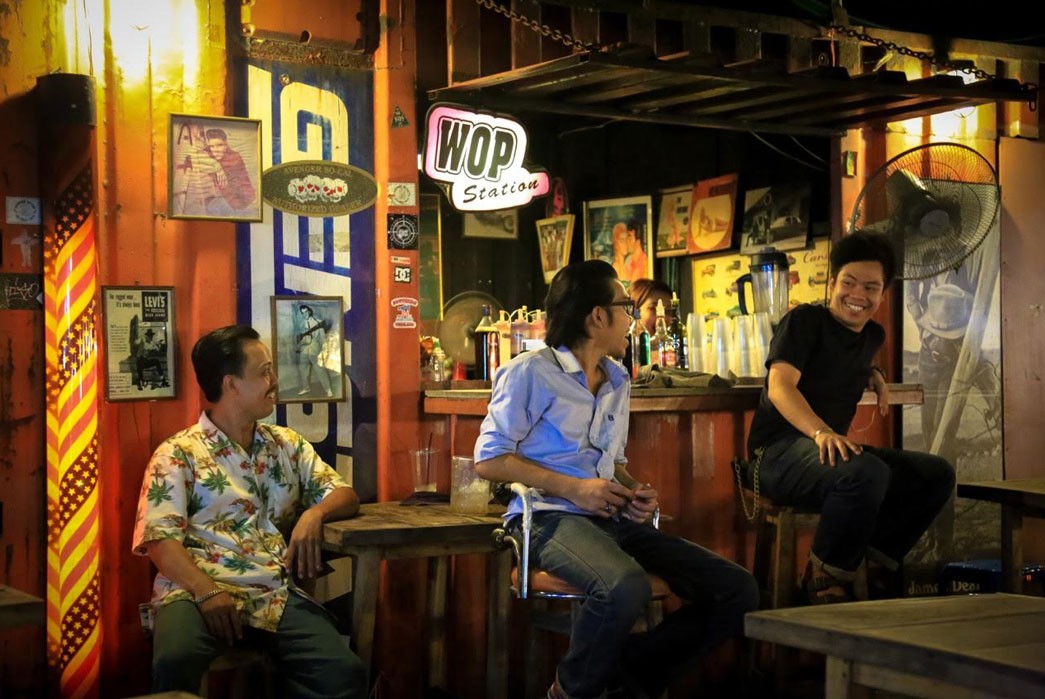
Train Market, Bangkok (courtesy of Sander)
So why were denim and Americana such a big deal? Well, much like the Japanese obsession with ‘Shibukaji’ (American casual and workwear, for those who didn’t read page 217 of my book, you swines) my theory is it started with war. It’s well documented that the Japanese became obsessed with the Americans in the late 40s and 50s, who had been posted in Japan during and just after WWII. Well, this same obsession and interpretation of Western style is also the case in SE Asia.
Lauren tells me: “There is a mentality here that exists thanks to a strong culture, and tradition is always second best to things that come from the west.” I personally think the Vietnam war might have had a lot to do with this; all the strapping American soldiers coming over to Vietnam with their kit bags and camo and buying embroidered souvenir jackets. Despite this period of suffering, a mutual embrace of each others’ cultures occurred and is still being played out to this day.
But also worth noting is the international aid. The influx of second-hand clothing from West to East started as early as the 1940s. This rag trade is still key today and has been built into a higher-end collectors market at places such as Chat-u-Chak. Ben tells me: “Vintage is huge in SE Asia. Malaysia, Thailand, and Cambodia all get their share of hand-me-downs from first world countries. They have been dealing vintage for a long time.”
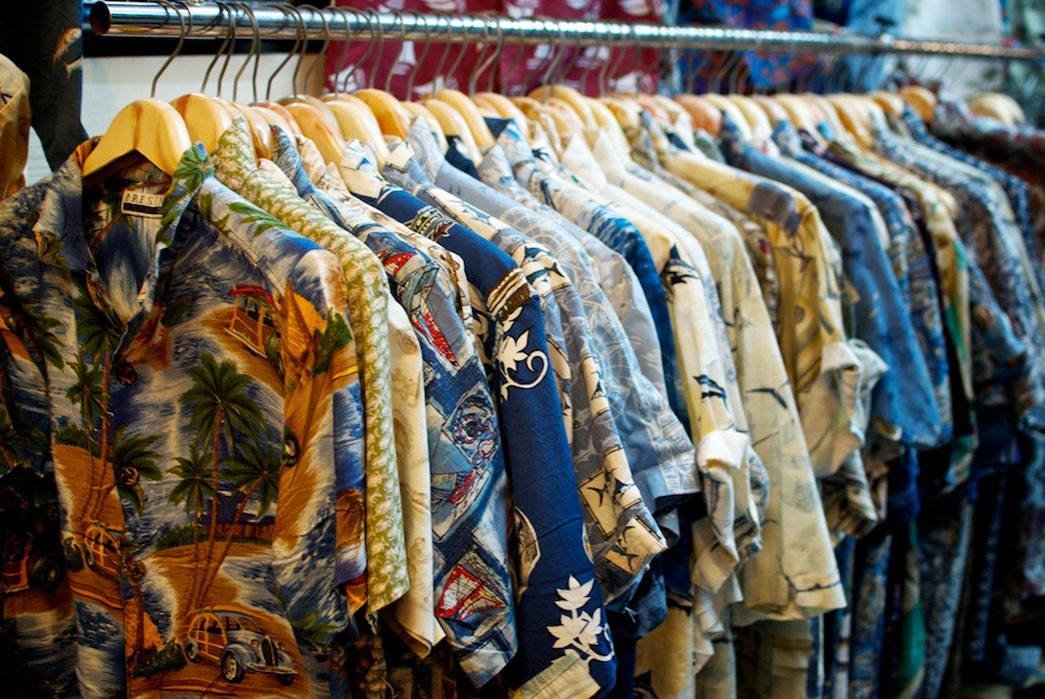
Chat-u-chak Market
And of course, when these bales of garments come in, with them comes opportunity.
“People are really thrifty here, so whatever can be sold is sold,” Lauren confirms. “I think people in developing countries are super quick to catch onto trends so that they can survive – thanks to no social security, we learn not to rely on others, so there is a huge entrepreneurial spirit here from the slums upwards. And when you have a massive influx of vintage from charity shops in the west, then you have a gold mine of opportunity.”
If there’s money to be made, then of course the people of a developing country are bound to get involved. Ben tells me, “I always hear from older Thai folks about how they used to buy and sell denim when they were young, trying to pay for university and to hook up with chicks… they always understood about the [telltale details of vintage jeans] Big E, black bartacks, single stitched seams etc… Denim goes deep in the Thai blood.”
So that explains a lot–vintage was learned first as a way of earning a living and getting by and has since turned into an obsession which has, in turn, inspired many fledgling brands to start their own labels. So when did a love of vintage cross over to this thriving raw denim culture we see today?
Mr. Hamzah from Sage remembers it clearly: “the raw denim ‘boom’,” or hype, in Indonesia, started in circa 2006/2007, when brands like Nudie, Cheap Monday, and Ksubi entered the market with their raw denim. That introduced the “don’t wash your jeans for 6 months and you’ll get cool fades” mantra. Then the early adopters started to follow that cult, and share their experience with their raw denim on general fashion forums here. Then, circa 2008/2009, the second wave of raw denim hype started, the Japanese denim started to penetrate the market.
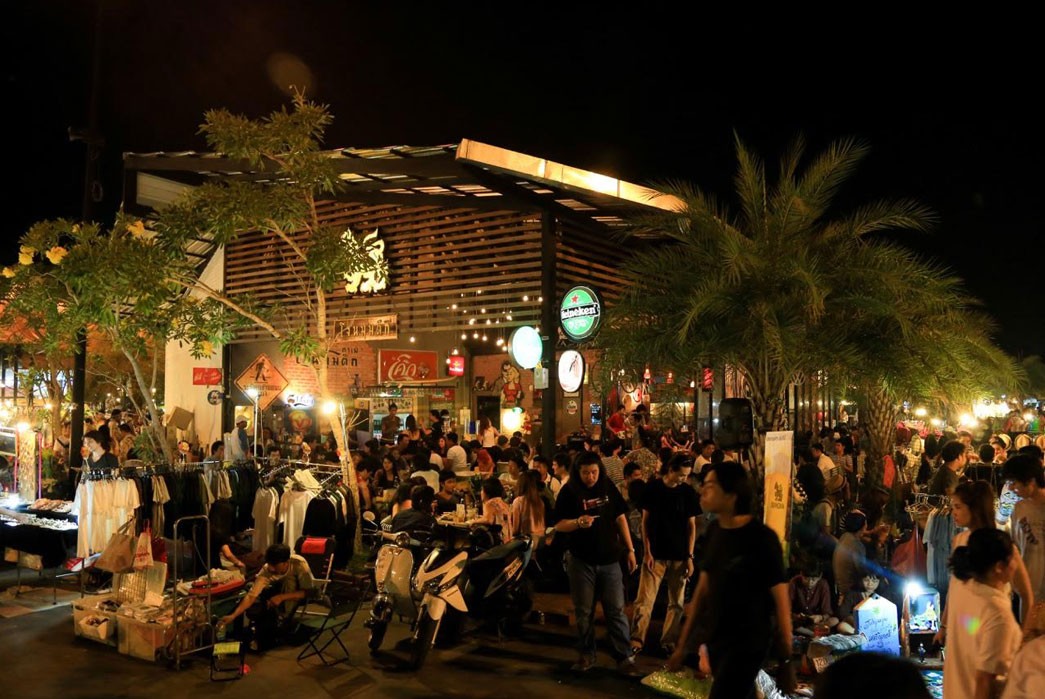
JJ Green Market, Bangkok (courtesy of Sander)
It started with brands like Imperial, Skull, Pure Blue Japan, and Samurai. Then the denim enthusiasts who saw how the Japanese denim fades with such distinctive character, those tate-ochi, those electric blue contrast fades…. And then the majority preference changed, they left their Nudies and Ksubi’s behind, moved on to the Japanese brands, and they familiarized themselves with 17-19oz. of denim that produced better and more unique fades.
Direz launched Darahkubiru shortly after this:
“In 2009, probably just around two to three local Indonesian brands were doing raw denim and they started selling them on Darahkubiru. Now there are more than 20 of them. They started to sell raw denim sourced from local factories, which aren’t selvedge, but one of the brands named Massa (RIP), sourced a Japanese selvedge fabric back then. So around 2010, everybody started sourcing selvedge fabric too; through their own connections, be it from China, Japan, Thailand.”
And that’s the exciting thing about SE Asia; it’s why these local denim enthusiasts were able to do what they did: because of price and availability of local production. There is a very real, affordable industry in many of these countries so once you have the interest, you can easily build the industry. “For thirty plus years, denim production has been a big thing here in Thailand. Many Japanese brands have moved their production to Thailand due to the prices. Thailand is very comparable on quality and product taste level. One of the bigger selvedge mills (Atlantic mills) is based here and even Kaihara opened a mill here recently,” explains Sander. “I think that due to the creative mindset in general of the Thai people, they really can translate that emotion into the product… it’s not China for sure.”
Lauren agrees and emphasizes this right-brain affinity for denim craft: “Ideas of cultural changes had been brewing since the early 90s here. There began a push to bring Thai handicraft products and traditional practices back to life – like woven indigo fabric. I think this was the seed that was watered by heightened global connectivity and access to world trends.”
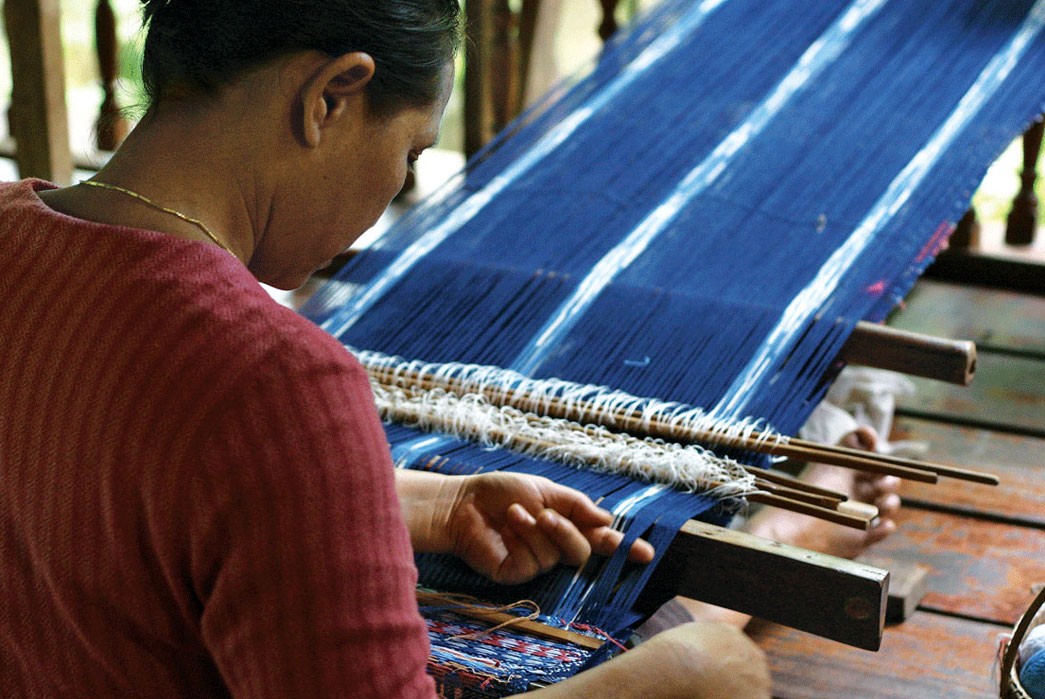
Chiang Mai (photo source: Modern Farmer)
I didn’t manage to visit on my last trip, but the northern areas of Chiang Mai and small villages beyond are like the mecca of Thai indigo craft. The UK’s own Story MFG are huge advocates of this movement and have based much of their energies in producing out here, as are Indigo People, and many more besides. As slow-made Western brands are attracted to work with these small makers, they are in turn supporting these families and villages and helping to keep traditional and local craft alive. Thailand is home to hand-loom weaving, natural indigo dyeing, Ikat, Batik, you name it.
And it’s this creative nature that also feeds the fascination with fades: “Raw denim is an exciting process that speaks to individualism,” says Lauren. “In South East Asia, I see people embracing all kinds of denim, and it’s definitely not just a bloke contest, which is part of the raw denim re-insurgence. I think people get inspired by such a romantic story as the journey of your first raw denim piece.”
Wearing a jean till it becomes a part of you also has a great deal to do with that thrifty side too, as Ben explained to me:
“First off let’s not talk about denim heads, cause we all know they like it raw ’cause it’s “cool” right now. Let’s only talk about the older dudes and the rural area folk (real Thai guys); they know that washing jeans is something you rarely do. I’ve heard it countless times by many people that they wash jeans with the garden hose and use their bare feet to rub them down (on a tile driveway, not in the mud). No soap, no magical washing machine, no salt, and never a dryer. They hang it up in the hot sun until the jean stands up by itself. These guys have denim close to the heart ‘cause back in the day, not everyone could afford a good pair of Levi’s. They love and take care of their jeans ‘cause it meant something to have them in the first place.”
And then finally, let’s talk about that goddamn climate! Because we all know by now that SE Asia has made a name for themselves with their ‘heaviest fades,’ and climate has a lot to do with that.
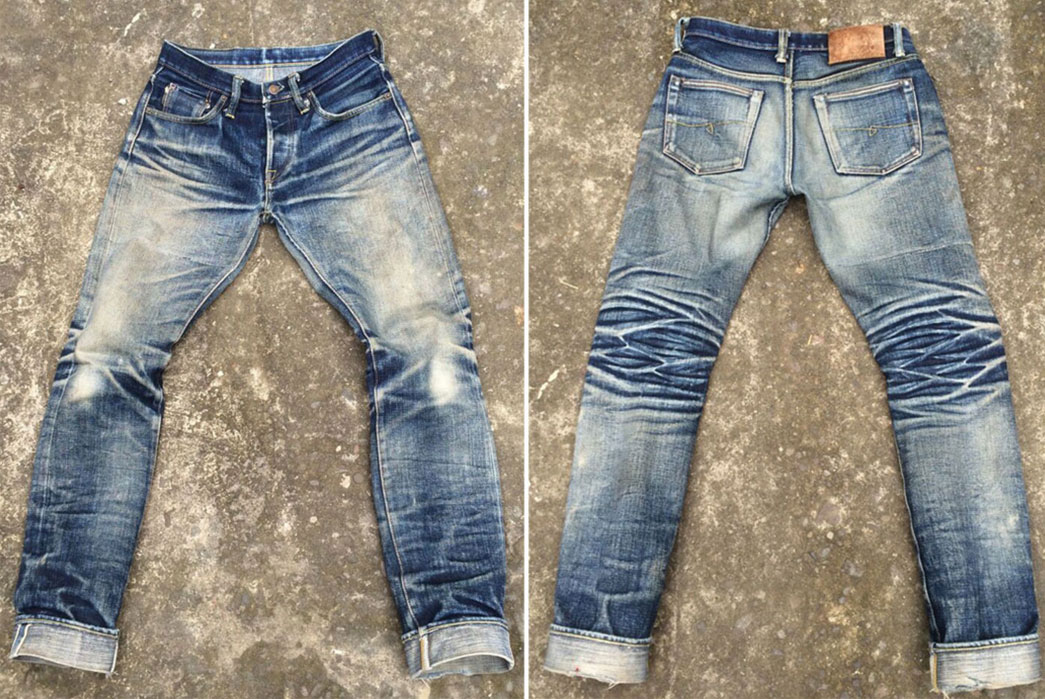
Wahyu Nugroho’s fades from a recent Fade Friday.
Mayang is continually amazed by all the denimheads out there:
“During the day in some areas like Jakarta, Surabaya, Semarang, Medan, Yogyakarta, and Bali, the temperature hits around 32-35o C (90-95 F) and humidity around 70-95%. That is very hot to wear heavyweight denim, but most of them wear it everyday, because they always crave for the best fades. So they do anything to get the fades; they run, they walk, they squat, they hike, they ride motorcycles, they even sleep in their denim.”
The combination of humidity, heat, extreme sunlight, and this crazy enthusiastic attitude is what has led to some of the extreme fades you guys have no doubt seen on Fade Friday posts. Heavier weights, as you know, create even more extreme looks. As founder of Sage, Mr. Hamzah understands the climate to weight mentality. “The majority of the market here in Indonesia are really proud of their denim evolutions. They don’t mind getting uncomfortable with hot and humid weather in their heavyweight denims, as long as their denim fades great.”
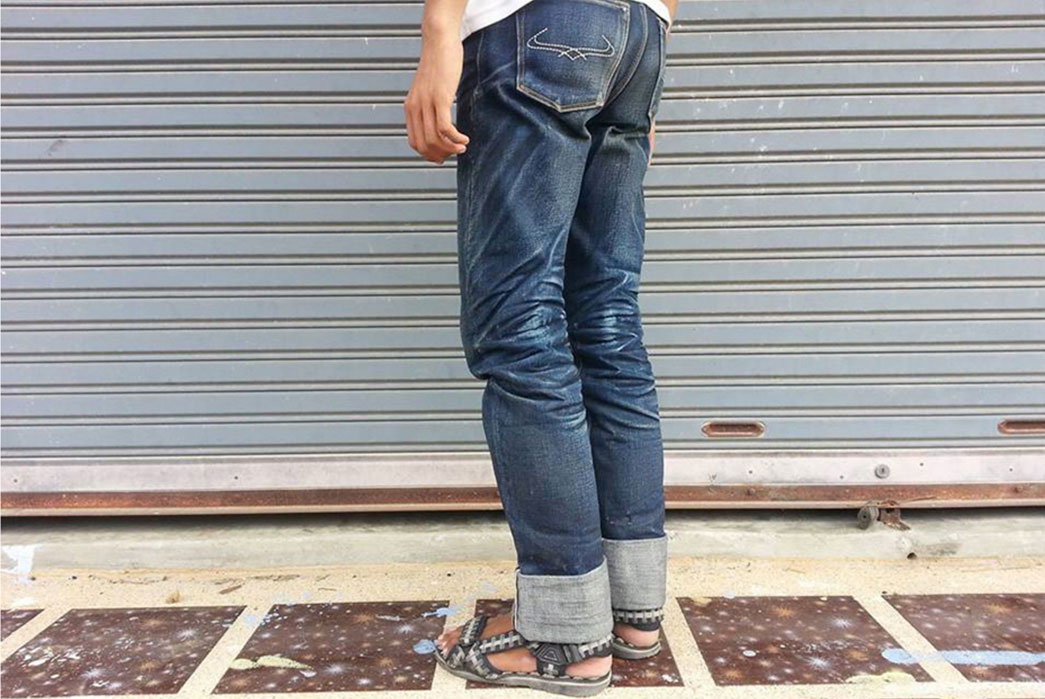
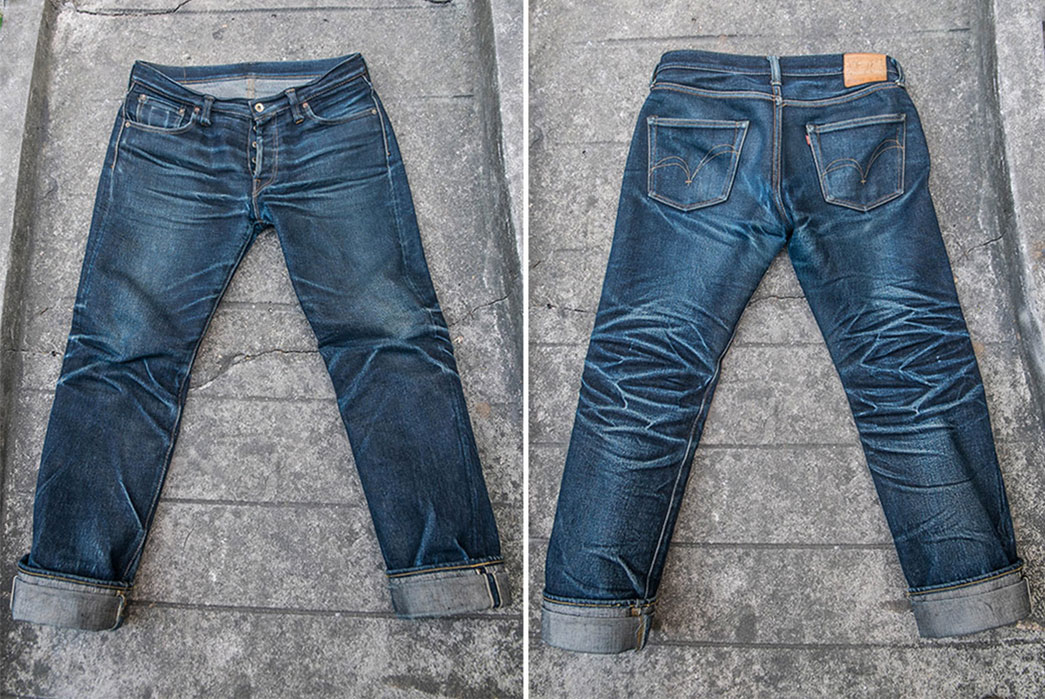
To cater to this rise in popularity in raw denim, Direz from Darahkubiru founded the Wall Of Fades event in 2009. It started with forum members and about four denim brands. “The response was fantastic,” he says, “over 1,000 people came, saw the exhibition and bought local products shown at the exhibition. It later became an annual event, with last year’s gathering about 30,000 people with around 40 brands showing off their products.”
So I think we’ve cracked it guys: South East Asia has got the understanding and existence of a thriving vintage scene–access to some of the best vintage denim in the world which–when you add an entrepreneurial spirit, leads to a fantastic knowledge and understanding of the history of denim.
The people have a natural taste for Americana and the lifestyle that goes with it. Add to this the access to manufacturing, both modern and competitive, plus ancient and artisanal. Chuck in the enthusiasm and creativity that seems inherent in SE Asia, and it’s no wonder this scene has kicked off. And then lastly, good old mother nature lends her hand, collaborating in some of the best denim fades the community has seen: it’s a match made in SE Asia.
The market is continuing to grow, new denim brands are continuing to emerge, these raw denim jeans are continuing to fade like no other, and this fascinating denim eco system continues to be an inspiration to the rest of the world.
“I think South East Asia is growing at the speed of a fast paced cha-cha!” jokes Lauren. “The denim- and heritage-wear scene has blossomed overnight thanks to the eclectic range of stores, models, and makers who have brought foreign ways back home and made it their own.”
I wonder what the future holds.
